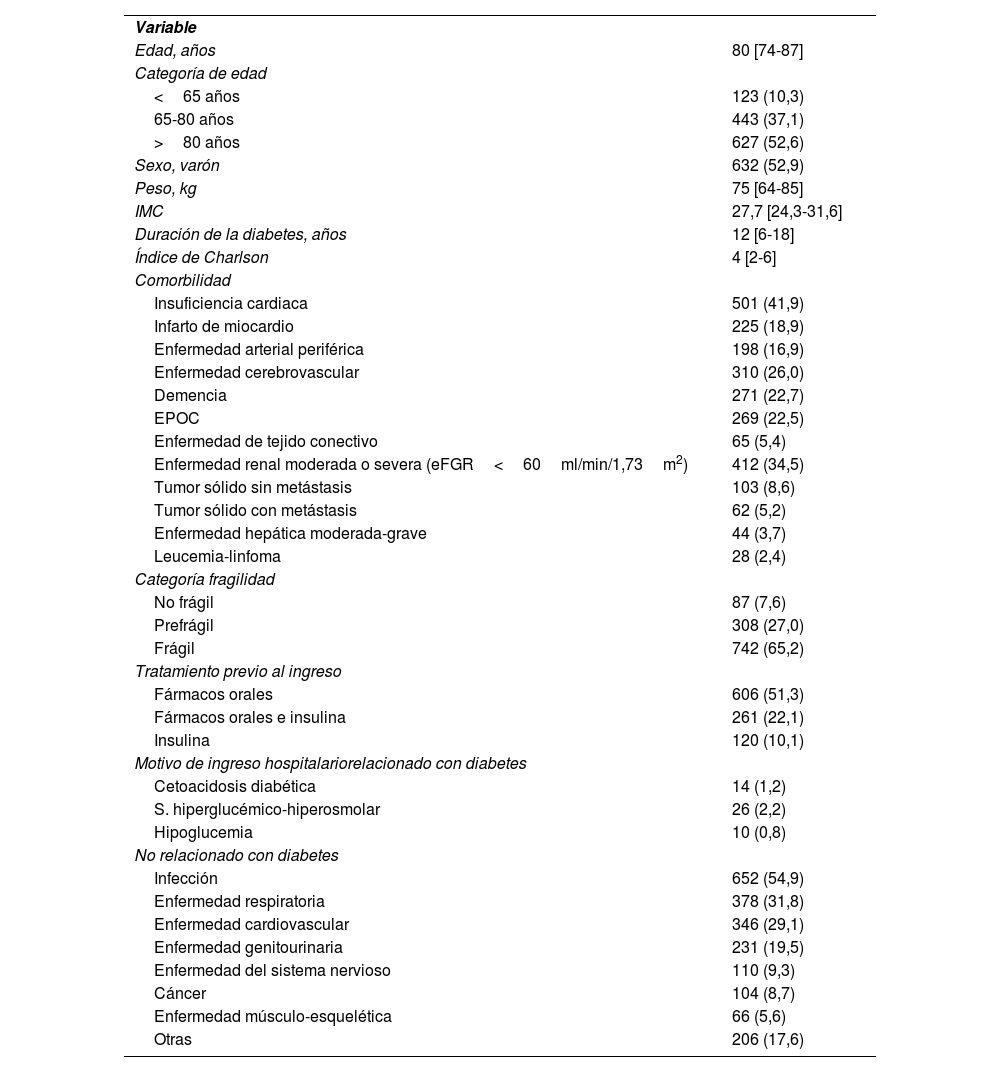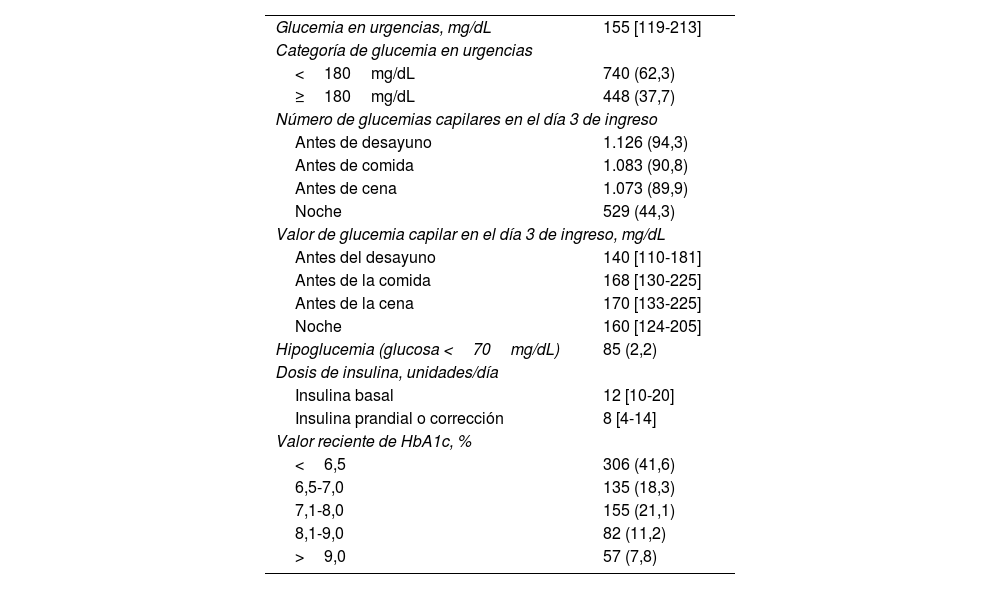Evaluación de la calidad de la asistencia a los pacientes con diabetes mellitus ingresados en España.
MétodosEstudio transversal que incluyó a 1.193 (26,7%) pacientes con diabetes tipo 2 o hiperglucemia de un total de 4.468 pacientes ingresados en los servicios de medicina interna de 53 hospitales (España). Se recogieron datos demográficos, adecuación de la monitorización de la glucemia capilar, tratamiento administrado durante el ingreso y terapia recomendada al alta.
ResultadosLa edad mediana fue de 80 años (74-87), 561 (47%) pacientes eran mujeres, con un índice de Charlson de 4 (2-6) puntos, siendo clasificados frágiles 742 (65%). La mediana de glucemia al ingreso fue de 155 (119-213) mg/dL. Al tercer día de ingreso el número de glucemias capilares en objetivo (80-180mg/dL) fue de 792/1.126 (70,3%) en el predesayuno, 601/1.083 (55,4%) en la precomida, 591/1.073 (55,0%) en la precena y 317/529 (59,9%) durante la noche. Se observó hipoglucemia en 35 (0,9%) pacientes. El tratamiento durante el ingreso fue realizado con insulina en escala móvil en 352 (40,5%) pacientes, insulina basal y análogos de insulina rápida en 434 (50%) y dieta exclusivamente en 101 (9,1%). Un total de 735 (61,6%) pacientes disponían de un valor reciente de HbA1c. En el alta se incrementó el uso de iSGLT2 (30,1 vs. 21,6%; p<0,001) y el uso de insulina basal (25,3 vs. 10,1%; p<0,001).
ConclusionesExiste un excesivo uso de insulina en escala móvil, una deficiente información de los valores de HbA1c y una prescripción aún deficiente de tratamientos con beneficio cardiovascular al alta.
Evaluation of the quality of care for patients with diabetes mellitus admitted to hospitals in Spain.
MethodsCross-sectional study in one day that included 1193 (26.7%) patients with type 2 diabetes or hyperglycemia out of 4468 patients admitted to the internal medicine departments of 53 hospitals in Spain. We collected demographic data, adequacy of capillary glycemic monitoring, treatment administered during admission, and recommended therapy at discharge.
ResultsThe median age of the patients was 80 years (74-87), of which 561 (47%) were women, with a Charlson index of 4 points (2-6), and 742 (65%) were fragile. Median blood glucose on admission was 155mg/dL (119-213). On the third day, the number of capillary blood glucose levels in target (80-180mg/dL) was pre-breakfast 792/1126 (70.3%), pre-lunch 601/1083 (55.4%), pre-dinner 591/1073 (55.0%) and night 317/529 (59.9%). A total of 35 patients (0.9%) were suffering from hypoglycemia. Treatment during hospitalization was performed with sliding scale insulin in 352 (40.5%) patients, with basal insulin and rapid insulin analogs in 434 (50%), or with diet exclusively in 101 (9.1%). A total of 735 (61.6%) patients had a recent HbA1c value. At the time of discharge, the use of iSGLT2 increased significantly (30.1% vs. 21.6%; p<0.001), as well as the use of basal insulin (25.3% vs. 10.1%; p<0.001).
ConclusionsThere is an excessive use of insulin on a sliding scale as well as deficient information on HbA1c values and an even deficient prescription at the discharge of treatments with cardiovascular benefit.
Article
Diríjase desde aquí a la web de la >>>FESEMI<<< e inicie sesión mediante el formulario que se encuentra en la barra superior, pulsando sobre el candado.

Una vez autentificado, en la misma web de FESEMI, en el menú superior, elija la opción deseada.

>>>FESEMI<<<










